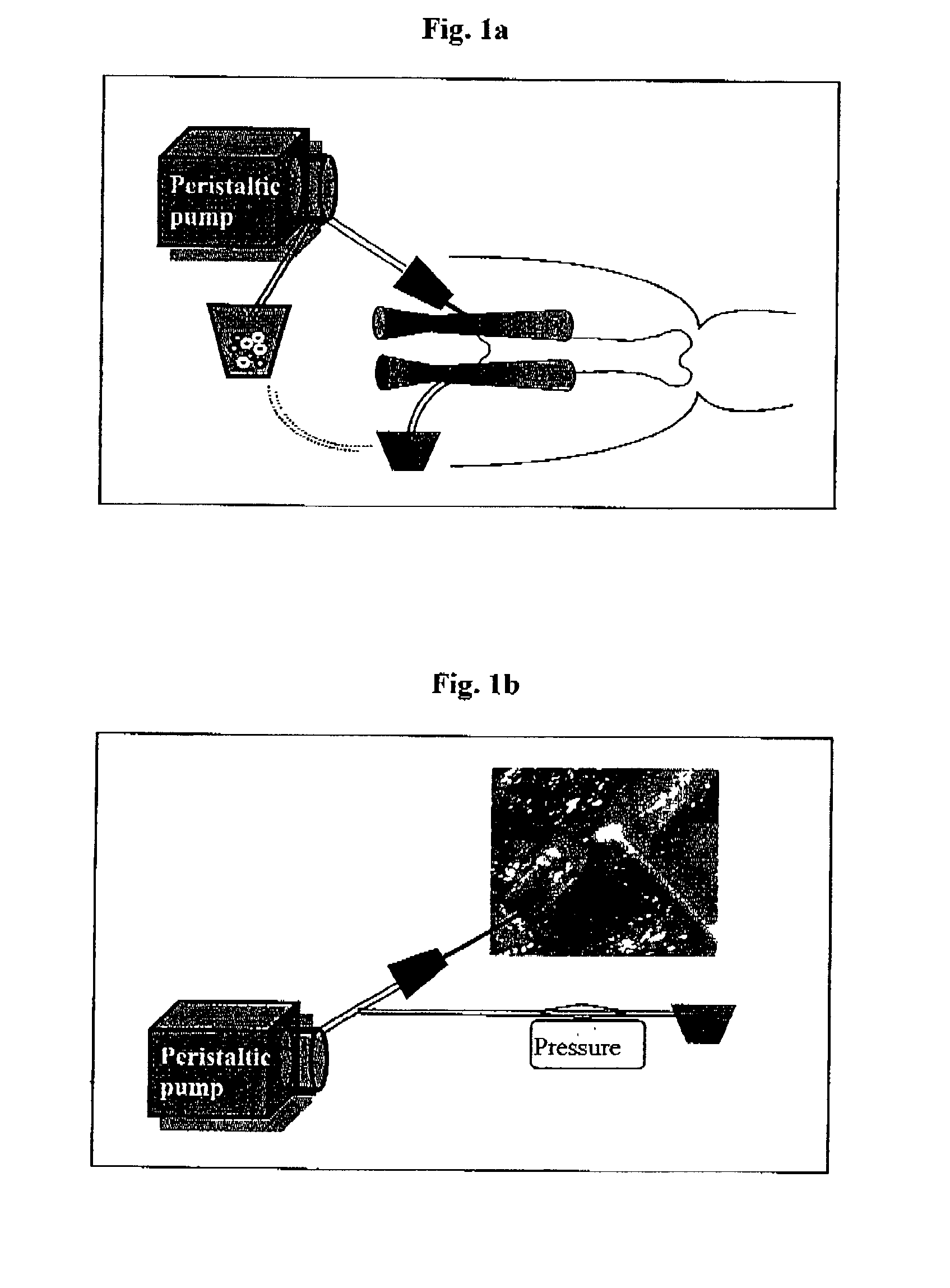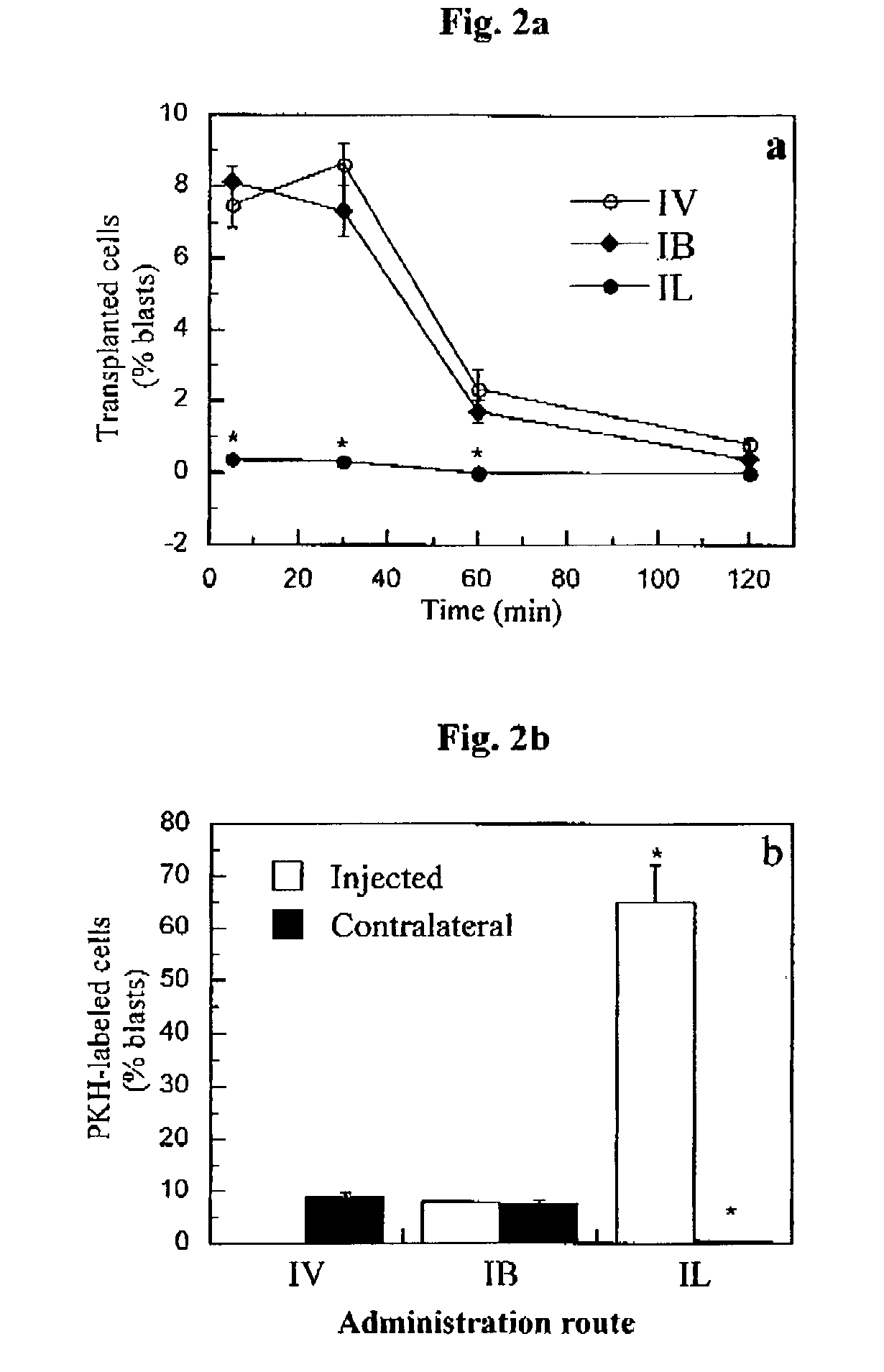Method of inducing immune tolerance via blood/lymph flow-restricted bone marrow transplantation
a bone marrow and lymph node technology, applied in the direction of biocide, antibody medical ingredients, drug compositions, etc., can solve the problems of graft rejection, no adequate solution, and significant drawbacks in the transplantation of allogeneic cells, tissues or organs
- Summary
- Abstract
- Description
- Claims
- Application Information
AI Technical Summary
Benefits of technology
Problems solved by technology
Method used
Image
Examples
example 1
Transplantation of Allogeneic Donor Bone Marrow Cells Via Isolated Limb Perfusion Effectively Induces Immunological Tolerance to Donor Type Skin and Cardiac Grafts in Mildly Conditioned Recipients
[0234]Transplantation of allogeneic cells, tissues and organs is a major life-saving and therapeutic modality for numerous diseases. However, such transplantation is beset by numerous problems, including graft rejection and graft-versus-host disease which must be inhibited by the use of highly toxic immunosuppressive agents. Transplantation of megadoses of allogeneic donor BMCs in conjunction with pre-conditioning with total body irradiation has been shown to lead to stable engraftment of donor BMCs, and to consequent donor specific hemopoietic chimerism, which chimerism having been shown to correlate with induction of immunological tolerance to secondary donor type organ grafts without or with mild posttransplantation immunosuppressive regimens (Ildstad S T and Sachs D H. 1984. Nature 307:...
PUM
| Property | Measurement | Unit |
|---|---|---|
| pressure transducer | aaaaa | aaaaa |
| pressure transducer | aaaaa | aaaaa |
| body weight | aaaaa | aaaaa |
Abstract
Description
Claims
Application Information
 Login to View More
Login to View More - R&D
- Intellectual Property
- Life Sciences
- Materials
- Tech Scout
- Unparalleled Data Quality
- Higher Quality Content
- 60% Fewer Hallucinations
Browse by: Latest US Patents, China's latest patents, Technical Efficacy Thesaurus, Application Domain, Technology Topic, Popular Technical Reports.
© 2025 PatSnap. All rights reserved.Legal|Privacy policy|Modern Slavery Act Transparency Statement|Sitemap|About US| Contact US: help@patsnap.com



